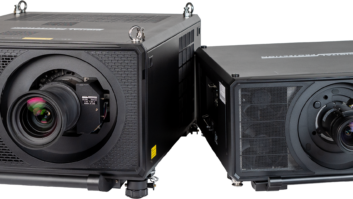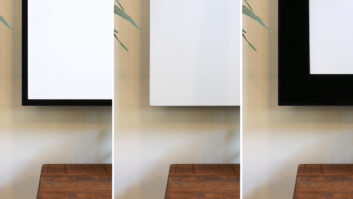Los Angeles, CA–Today, leading projector manufacturers and technology providers united to endorse a new international specification that will allow users to evaluate the color performance of digital projectors to ensure their investment delivers the most impact and the greatest effect. The new specification called “Color Brightness” measures color light output. With the fast-paced development of vivid color content and the rapid adoption of high definition video, the quality and impact of the color produced by a projector has become extremely important. Leading industry players in support of the movement include 3LCD manufacturers Epson and Sony.
From the classroom to the boardroom to the living room, vivid color improves communication–enhancing attention, comprehension, and learning. Current industry specification metrics fail to highlight the differences in color light output among competing products and technologies–leaving it virtually unreported. Despite the overwhelming use of color today, the industry has continued to rely largely on specifications that only measure black and white performance such as brightness and contrast ratio. There is growing consensus for the need for an effective, easy-to-use projector measurement metric: color brightness.
“At Sony, we are focused on delivering a higher standard of image quality,” said John Kaloukian, director of the Professional Display Group at Sony Electronics. “Image quality is a function of high color and high brightness. That is exactly what the Color Brightness specification communicates. Based on industry accepted methodologies, color brightness makes a lot of sense for communicating the importance and impact of color.”
“The projector market has changed significantly over the years. Users want to take full advantage of what is out there in education, business and home theater,” said Mike Isgrig, director of Epson Projection. “Color Brightness gives the market a key metric to evaluate technology and products more effectively. We plan on using it extensively to highlight our advantage over other projectors.”
Based on the existing industry-standard test, Color Brightness, like the current light output measure for brightness (white), is reported in lumens. Color Brightness specifies a projector’s ability to deliver the primary colors of light. Today, all video, DVD, HD, digital camera and computer signals are encoded in an RGB color space. Color Brightness measures the brightness of red, green and blue, exactly matching the input signal. If a projector can produce bright red, green, and blue equal to the brightness of white, it can reproduce the true color that the creators intended. If Color Brightness does not equal or come close to the white brightness, color images can appear dark, washed out and less accurate.
“Without this new metric, consumers are in the dark about color performance,” commented Karl Lang, president of Lumita. “Two projectors that both advertise 2,000 (white) lumens can have vastly different color performance. Color brightness provides the information consumers have needed for a long time,” continued Lang.
Working with color engineers and industry experts, supporters will publish the test methods and studies exemplifying the metrics’ utility and effectiveness. The test method will be submitted to major international standards bodies for acceptance.
Visit www.3LCD.com.







